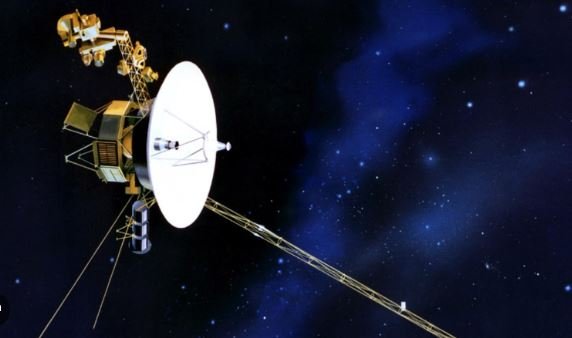NASA’s Voyager 2 spacecraft has been on an incredible journey through interstellar space, but recently, it encountered a setback as it experienced communication difficulties due to an antenna misalignment. This misalignment has resulted in the spacecraft’s inability to receive commands from mission control or transmit valuable data back to Earth. Nevertheless, NASA remains hopeful that the problem will be resolved during the next orientation reset, which is scheduled for October.
Voyager 2 has earned its place as one of the most distant human-made objects in space, second only to its predecessor, Voyager 1. Launched on August 20, 1977, Voyager 2 has been on an epic voyage, exploring the mysteries of our solar system and beyond. Its achievements include close-up observations of all four giant planets in our solar system – Jupiter, Saturn, Uranus, and Neptune. At Jupiter, Voyager 2 made a remarkable discovery of a 14th moon, and at Uranus, it unveiled ten new moons and two new rings. But perhaps its most significant accomplishment was being the first human-made object to fly by Neptune, revealing five moons, four rings, and a feature known as the “Great Dark Spot.”
Currently, Voyager 2 is situated more than 19.9 billion kilometers away from Earth, in interstellar space, a region that lies between the Sun’s heliosphere and the astrospheres of other stars. On December 10, 2018, Voyager 2 achieved another momentous feat by becoming the second spacecraft to explore the space between stars, joining its twin, Voyager 1, as the only human-made objects to venture into this vast expanse.
Despite the temporary interruption in communication, the Voyager 2 mission team maintains confidence that the spacecraft will continue to travel along its planned trajectory during this period of silence. This reassurance comes as a relief to space enthusiasts and scientists alike, as the valuable insights Voyager 2 provides about interstellar space are of immense scientific significance.
Meanwhile, Voyager 1, located nearly 24 billion kilometers away from Earth, continues to operate flawlessly without any communication issues. Both spacecraft serve as pioneers, carrying the hopes and dreams of humanity as they venture into the unknown, offering valuable data and insights about the cosmos.
As space exploration continues to capture the imagination of people worldwide, the Voyager missions stand as a testament to human ingenuity and the boundless curiosity that drives us to explore the cosmos. The upcoming orientation reset in October holds the promise of restoring communication with Voyager 2, and scientists and space enthusiasts eagerly await the spacecraft’s resumption of its extraordinary mission.
